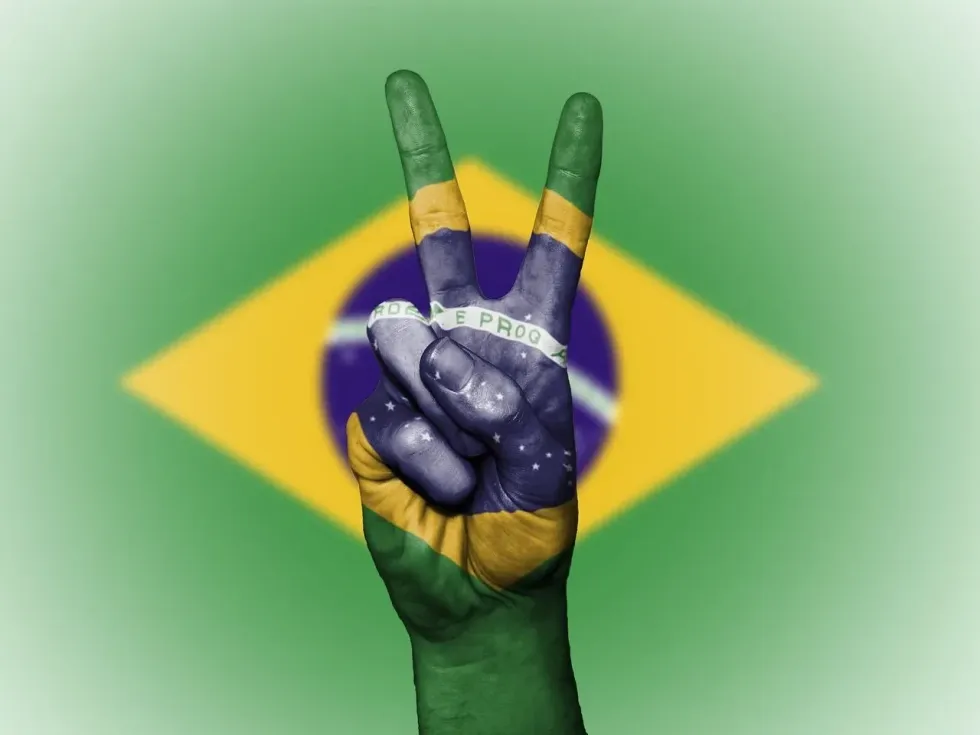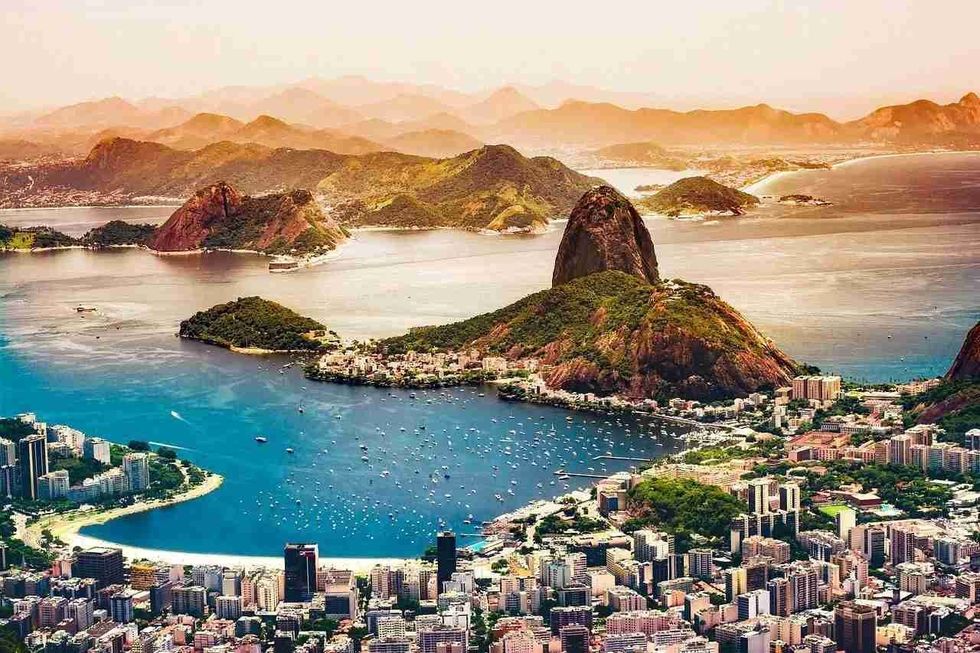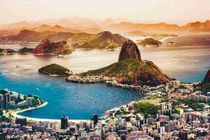41 Brazil History Facts: Know All About This South American Country!

The largest country in South America, Brazil, is the fifth largest country in the world.
This state was discovered by the Portuguese in the 16th century. Since then, the nation is known for its flourishing culture and heritage all over the world.
Brazil is so populated because of the early human settlement of indigenous tribal groups. In 2016, Brazil hosted its first-ever summer Olympic games. The three major cities in Brazil are Brasilia, Rio de Janeiro, and Sao Paulo. It is also interesting to learn that Brazil is the largest producer of coffee.
Many people do not know much about Brazil's history or its facts. Here we will cover some topics, like why is Brazil so densely populated? Is Brazil named after a person? How has history impacted Brazil today? and many more aspects of the culture of this South American country.
Get ready with your nice Brazilian coffee to read the historical facts about Brazil and its capital city, Rio de Janeiro!
If you enjoyed reading this article, you must also check out Brazil education facts and Brazil economy facts here at Kidadl.
Foundation Of Brazil History
Brazil is famous all across the globe for the festivities of the Brazilian Carnival as well as for the statue of Christ the Redeemer.
Several tourists from different countries visit Brazil every year, but this section will reveal something that they won't even know. Brazil’s history is filled with oppression and how it got its freedom from them.
When the first Portuguese ship arrived in the 15th century on the Brazilian territory of South America or Latin America, which is now called the Federative Republic of Brazil, Brazil was already populated with more than 1 million people of different tribes based on language, culture, and divided territories.
It is said that at that time, there were already more than 2,000 tribes living on the coast and along the river banks, mainly indulging in hunting, fishing, and migrant agriculture.
But along with these activities, they were also involved in cannibalism, tribal warfare, and other things that made the Portuguese realize that they should convert the tribes to the Christian religion.
The Portuguese brought a lot of diseases with them from the sea, like smallpox and measles, and killed thousands of tribal people who did not have any immunity against these infections. This degraded a large population of native people, who suddenly found their harmonious living place turned into the deathbeds of hundreds of their own.
In the 15th century, Brazil was affirmed by a Portuguese ship under the command of Pedro Alvares Cabral. But here is another historical fact about which not many people are aware: it is that in the historical papers, he is not the first man that arrived in Brazil; instead, two theories are based on that.
Some say that it was Duarte Pacheco, and some claim that it was found by a Spanish companion of Columbus's on his voyage to find America, named Vince Yanez.
But history tells us that it was Pedro Cabral’s ship that first arrived and noticed stone-using natives who were living on the river coast, speaking the Tupi-Guarani language and fighting among themselves.
This was also fine till the time when Portugal lost its interest in Brazil because of its flourishment in the trade with India and China, which led to pirates and traders gaining most of the profit in the name of Portugal for the trade from Brazil to other countries, mainly the trade of Brazilwood.
This resulted in more divided stripes in Brazil, and authority was given to Portuguese noblemen.
Then starts the history of Brazil becoming a Spanish territory when the Portuguese king disappeared in a war named Alcacer-Quibir, and because he had no heir to succeed. This territory was taken by the Spanish king, Philip II of Spain because he was his uncle.
The Portuguese king’s body was never found, but its people always believed that one day he would come and take command of its territories. He never came, and the Brazilian territories then came under the command of the Spanish government but under Portuguese administration.
Slavery, destruction, and murders were common in the early settlements of the Portuguese government, which led to the rebels' own rule. Several different tribes allied to fight against the Portuguese colonists.
In the sugar age, when sugar plantations were started in Brazil and its annual growth increased to that of the Atlantic Islands, the Dutch captured the productive part of Brazil. However, the Dutch were expelled from Brazil by the joint union of Portuguese and Brazilian people.
For the first hundred years, it was a focus of attraction between different colonies because of its vast natural resources and the profit that it could generate for the colony’s army.
But the Portuguese people were always successful in defending their region. Several times, the French tried to occupy Brazil but were not successful in their attempts.
Eventually, the Brazilian wood production declined and Portuguese people became interested in the Brazilian gold rush, which, after some time, led to some tensions between the native people and colonists. The Portuguese tried to impose their new regime on the region to shore up their power, but that was the limit of the Brazilian people's ability to bear it.
They refused to yield and people started revolting against the rule of Prince Pedro or later called Dom Pedro I, which led to the independence on September 7, 1722.
Wars were still not ended then, but the message of nationalism was spread through the north and other regions of Brazil that led to the surrender of Portuguese soldiers. Finally, Brazil was recognized on August 29, 1825. That is why people speak Portuguese.
The First Document In The History Of Brazil
The name Brazil is from the Portuguese word 'Pau-brazil' which means 'Brazilwood'. Brazil was the largest producer of Brazilwood and grew plenty of it at the time.
So, no, the name Brazil is not derived from a person. The first document in the history of Brazil is its very first constitution, which was declared to be made right after its independence, but took two decades to finalize in the unrest of its aftermath.
This South American country gained its independence from the Portuguese on September 7, 1822. After a year in 1823, its emperor, Pedro I, commanded the process of making Brazil's constitution.
But with the initiation comes the problem of taking every group’s opinion and matters. Many problems arose at the time, like the wealthier population that influenced international trade were Portuguese immigrants, and then there was always a fear of rebellion from Brazilian people towards these immigrants.
Since Brazil was mostly dependent on the profit of these Portuguese traders, their opinion was crucial in the making of the constitution. On the other hand, a lot of Brazilian liberals were imprisoned, so their voices were said to be neglected in the procedure, which was also important.
Then, as a draft was developed, it was clear that the deputies wanted an authoritative constitution where a constitutional monarchy would rule. But Pedro didn't want to function as a mere figurehead; he wanted to protect the economy, raise Portuguese businessmen, and also did not want to be neglected by the parliament. This resulted in the Night of Agony.
As the emperor insinuated, its constitution gave parliamentary authorities less and the emperor more. In short, it was a presidential monarchy. The constitution of 1824 was less parliamentary, but still, it was considered more efficient than most of the other European liberal constitutions. As in Brazilian law, the imperial constitution took a progressive approach.
Brazil is a union of 26 states and one federal district that share a 4,500 mi (7,242 km) coastline with the Atlantic Ocean. A large portion of the national territory is covered by the Amazon rainforest and the Brazilian highlands. The Amazon River is one of the major rivers in Brazil and dominates northern Brazil.

Two Big Problems Brazil Has Had To Deal With For Much Of Its History
Brazil is the largest country in South America as well as the largest country in the Southern Hemisphere.
Its Brazilian culture is world-famous and we are all aware of its share in the world cups. European sailors arrived in this South American country via the Atlantic Coast and set up its institutions and human settlements.
Brazil’s terrain is mostly lowland plains with some hills and mountain ranges in the north; it was already the land of huge ethnic groups.
Even today, Brazil is home to ethnic groups of white, black, Asian, and indigenous people, with most of them residing in the city of Sao Paulo, making São Paulo the most populated city among South American countries with around 12 million residents in 2021. But then, in history, this segment was largely divided between Portuguese people and native Brazilians.
Sadly, the economy's increasing traders were among the group of immigrants, specifically Portuguese businessmen. For at least two decades, Brazil had to deal with these two distinct groups and practiced running the government smoothly.
There were two major problems, and the first one was that the large number of immigrants that were Portuguese or were known as the Portuguese party were loyal to the metropolitan government and wanted to keep their privileges intact.
They were among both the classes of the population, the wealthier ones that were engaged in international trade, and the lower classes, who were mainly free traders and workmen. Because most of the Brazilian elite were rural, this wealthy population of Portuguese immigrants was important for the prosperity and growth of the Brazilian territory.
The second major problem that Brazilian history has had to deal with for most of the time was that most of the population were slaves and workers who were crushed under the oppression of Portugal for several years.
There was always a threat of rebellion that could be caused by these slave populations and result in a massacre of the failing state.
Especially at this crucial stage where Brazil recently gained its independence, the next thing that was a big threat to avoid at all costs for the profit of the country was a rebel war.
Three Capitals Of Brazil In History
History has impacted Brazil in several ways. Brazil has shifted its capital three times in the past and has currently settled in Brasilia. Brazil has always had a federal government as a presidential constitutional republic.
As a federal republic, Brazil is led by the President, the National Congress, and the Judiciary. That is based on a representative democracy that has three independent working bodies, namely the legislature, judicial, and executive.
In 1549, Salvador was the first capital of Brazil, considering that the Portuguese first set up administration there. This city became the first place for a Catholic bishopry, which it still is.
But then, in 1763, Rio de Janeiro was considered a more appropriate port for trade, and most of the royal families, under the impression of the Napoleon invasion, fled from Portugal to Rio de Janeiro. This shifted their European capital to Rio de Janeiro.
Even after its independence in 1822, Rio de Janeiro remained the capital of Brazil. It remained Brazil’s capital city from 1763-1960.
After that, they decided to shift the population from the coastal region to internal parts of the country by shifting the capital from Rio de Janeiro to Brasilia. From 1960 to the present date, Brasilia has been the country’s capital.
Did you know...
Brazil is one of the most progressive South American countries. Brazil's history begins with the indigenous tribes of the country.
In the 15th century, Europeans came to Brazil. Under the sponsorship of the Kingdom of Portugal, Pedro Alvares Cabral was the first European to claim indigenous lands in what is now called the Federative Republic of Brazil in South America on April 22, 1500.
It became a Portuguese colony and part of its empire from the 16th to the early 19th centuries.
From the original 15 colonies of Donatary Captaincy established on the Tordesillas Line of 1494, which divided the Spanish domain to the west and the Portuguese domain to the east, Brazil expanded south along the coast and west along the Amazon and other inland rivers.
In the 20th century, the country's borders were defined. It is the largest country in South America and the fifth-largest country in the world. In the Brazilian national anthem, there are two stanzas with seven verses each, and both of these stanzas are based on the same tune.
Here at Kidadl, we have carefully created lots of interesting family-friendly facts for everyone to enjoy! If you liked our suggestions for Brazil history facts, then why not take a look at why do gnats fly in your face, or why do dogs scratch and bite themselves.
We Want Your Photos!
More for You
Bachelor of Science specializing in Microbiology

Oluwatosin MichaelBachelor of Science specializing in Microbiology
With a Bachelor's in Microbiology from the Federal University of Agriculture, Abeokuta, Ogun State, Oluwatosin has honed his skills as an SEO content writer, editor, and growth manager. He has written articles, conducted extensive research, and optimized content for search engines. His expertise extends to leading link-building efforts and revising onboarding strategies.
Disclaimer
1) Kidadl is independent and to make our service free to you the reader we are supported by advertising. We hope you love our recommendations for products and services! What we suggest is selected independently by the Kidadl team. If you purchase using the Buy Now button we may earn a small commission. This does not influence our choices. Prices are correct and items are available at the time the article was published but we cannot guarantee that on the time of reading. Please note that Kidadl is a participant in the Amazon Services LLC Associates Program, an affiliate advertising program designed to provide a means for sites to earn advertising fees by advertising and linking to Amazon. We also link to other websites, but are not responsible for their content.
2) At Kidadl, we strive to recommend the very best activities and events. We will always aim to give you accurate information at the date of publication - however, information does change, so it’s important you do your own research, double-check and make the decision that is right for your family. We recognise that not all activities and ideas are appropriate for all children and families or in all circumstances. Our recommended activities are based on age but these are a guide. We recommend that these ideas are used as inspiration, that ideas are undertaken with appropriate adult supervision, and that each adult uses their own discretion and knowledge of their children to consider the safety and suitability. Kidadl cannot accept liability for the execution of these ideas, and parental supervision is advised at all times, as safety is paramount. Anyone using the information provided by Kidadl does so at their own risk and we can not accept liability if things go wrong.
3) Because we are an educational resource, we have quotes and facts about a range of historical and modern figures. We do not endorse the actions of or rhetoric of all the people included in these collections, but we think they are important for growing minds to learn about under the guidance of parents or guardians.







